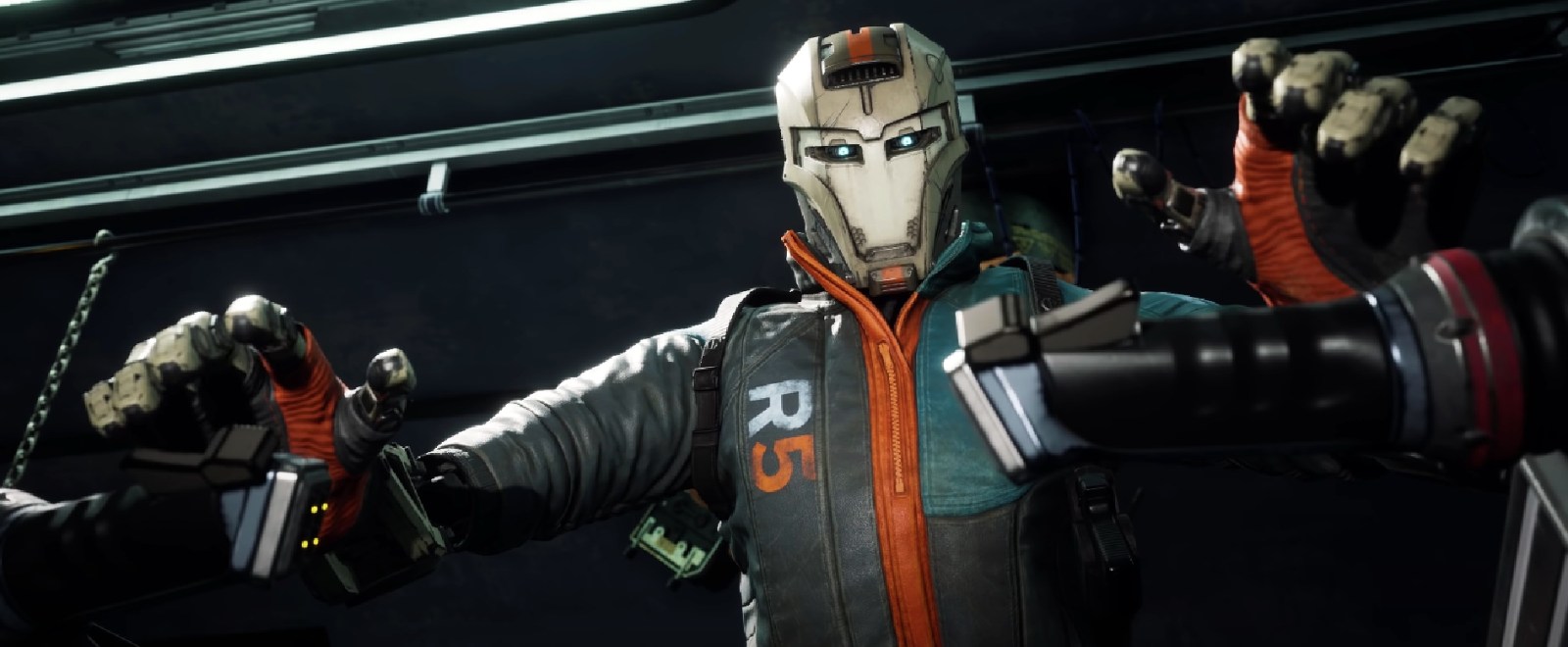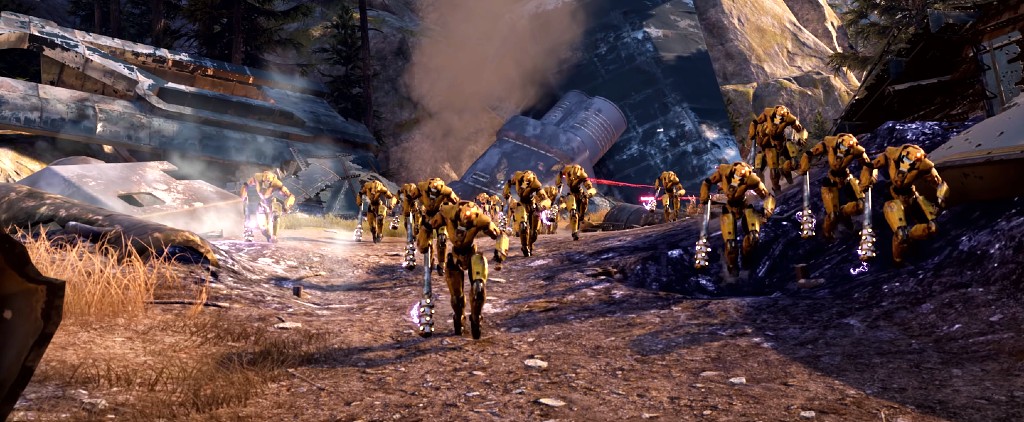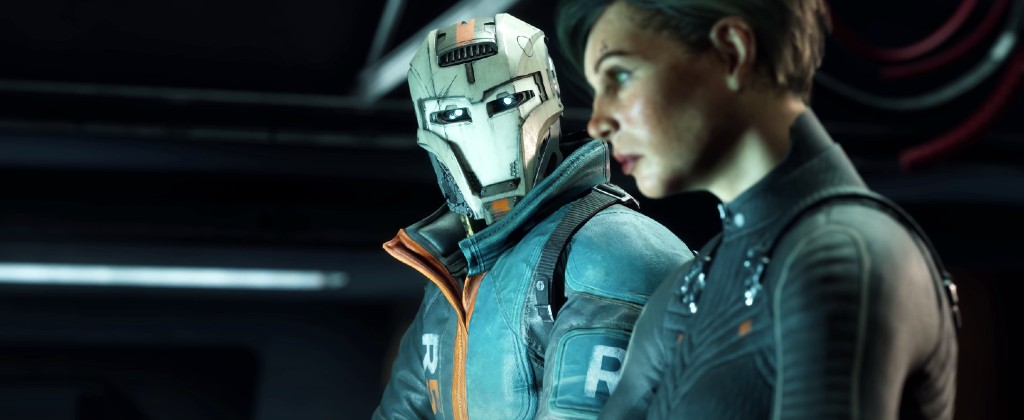
No first-person shooter can truly be defined as passive, but Disintegration is probably as close as you’ll get. That’s because the hybrid FPS is a game that hits consoles and PC on June 16 is trying to be several things at once, and its creators hope it has a place among a first-person shooter market that’s as competitive as ever. It’s fitting that in many ways the game’s plot mirrors V1 Interactive’s attempt to put real-time strategy elements into an FPS. It’s a game where humans are “Integrated” into robotic bodies in a world ravaged by disease and strife, only their organic brains remain protected in a metal case while the rest of them is now extremely recyclable.
Things go too far, however, and the evil robots take over — characters routinely call them “red eyes,” which is aesthetically and thematically convenient — leading to a resistance effort you must now help turn things around. To do that, you pilot a grav cycle, a hovering bike-like vehicle with weapons that helps you command a small crew of ground troops as you complete missions.
“We wanted that low barrier of entry but high skill ceiling,” said Blake Low, senior environment artist at V1 Interactive. “It takes you, you know, a round of two to figure out everything you’ve got available to you. But then putting it all together and expanding on that is when a new starts to click for you, when a game starts to click for you as a whole.”
It’s a first-person shooter that often plays — at least in its campaign mode — like you’re not the first person to shoot. Or not the best person for the job, anyway. The trick to Disintegration is to best direct your troops in the fight, not necessarily doing all of the fighting.
“It’s got that familiar pick up and looks like a first-person shooter feel to it. And you can familiarize yourself with that immediately but once you start to play with the interaction with the ground units, the crew you’re playing with and the different ways they compliment the graph cycle and the graph cycle compliments the composition of the team, all of that comes into play,” Low said. “I’d say this game is far more of a team based game reliant on the team as whole to succeed than most anything I’ve played recently.”
Playing Disintegration reminded me of a Dungeons and Dragons campaign where you’re playing a very support-oriented magic user, healing other members of your party and strategically watching the action go down rather than diving right into the fray for yourself. Healing is actually a big part of your job — a secondary healing weapon either shoots health packs directly at your troops or provides a healing halo from which you can benefit.
For some, that kind of gameplay will feel unnatural, or maybe even disillusioning. But it is certainly something different, and the game’s developers hope the audience is there for a distinctly different kind of FPS.
“The game is not going to be for everyone, and that’s fine,” Low said. “We’re really passionate about first-person shooters — a bunch of us coming from the Halo background. We want to build something but also want it to be fresh at the same time.”
Low described the RTS elements of Disintegration as an opportunity to change the game’s pace of play. Though you yourself only heal and have a primary weapon, the grav cycle is in charge of commanding your teammates’s special abilities such as grenades or mortar fire. When triggering those abilities, gameplay slows down a bit to allow for more precise aim. It also gives you some time to plan out your next move without pausing altogether and turning it into a turn-based slog.
“All of it naturally emerged together as we tried to make that first-person shooter-plus, whatever you want to tag it as,” Low said. “It does feel like a smooth first-person shooter but really adding that tactical element sometimes slows the game down, but it sometimes makes it chaotic and frenetic on purpose. That ebb and flow in how you react to the world.”

The campaign mode of any first-person shooter doubles as a tutorial of sorts, and Disintegration is no different. But it actually works in encouraging you to combine abilities and rewards you for completing Challenge Goals during the campaign with upgrade chips. You’re also more likely to find success in missions, and in multiplayer as a result. There’s a learning curve to understanding what’s being asked of you, but once you get into the rhythm of the game’s missions, it can be rewarding to see your abilities and team grow in power and find success.
That gameplay style doesn’t always mesh perfectly, and the disconnect might be too much for traditional FPS players to stick with. But unlike most games in the genre, it’s a bit surprising that the strongest element of Disintegration is the game’s story. An FPS about humans in brain only seems like a tough place to find emotional resonance, but Disintegration works hard to characterize its crew whether flesh or metal.

“The units on the ground are people. They are brains in robotic armatures,” Low said. “You’re going to develop cut scene story arcs with these people you’re going to come to care for them and then take them out on the missions with you. They’re not just noises on the ground, they’re important parts of the story.”
People who learn the game through the campaign will connect with that story, and there’s a surprising amount of heft to it. But the success of Disintegration will largely be determined by how many people take to the game’s multiplayer. That, however, will rely much more on whether they value the combat style more than the characters in their crew.
